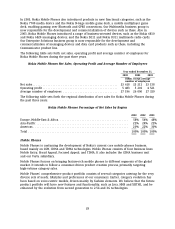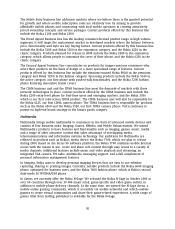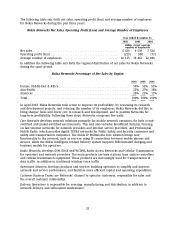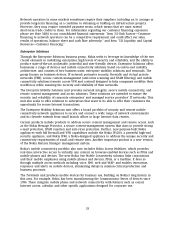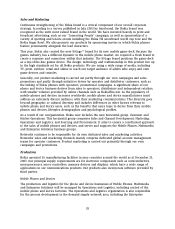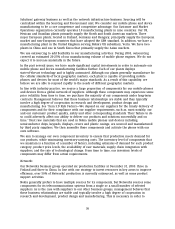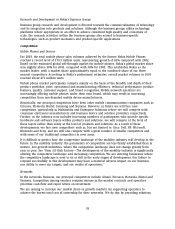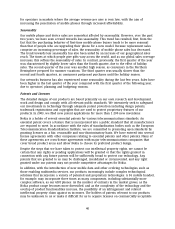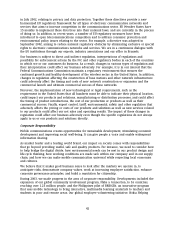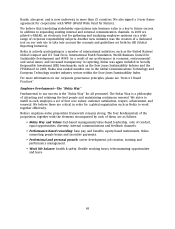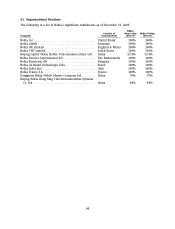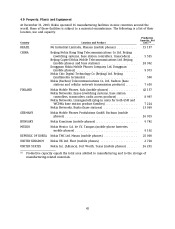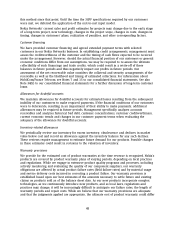Nokia 2003 Annual Report Download - page 40
Download and view the complete annual report
Please find page 40 of the 2003 Nokia annual report below. You can navigate through the pages in the report by either clicking on the pages listed below, or by using the keyword search tool below to find specific information within the annual report.Research and Development in Nokia’s Business Groups
Business group research and development is directed towards the commercialization of technology
and its integration into products and solutions. Although the business groups utilize technology
platforms where appropriate in an effort to achieve consistent high quality and economies of
scale, the research activities within the business groups also extend to business-specific
technologies, such as product mechanics and product-specific applications.
Competition
Mobile Phones and Devices
For 2003, the total mobile phone sales volumes achieved by the former Nokia Mobile Phones
reached a record level of 179.3 million units, representing growth of 18% compared with 2002.
Based on the estimated global sell-through market for mobile phones, Nokia’s global market share
was slightly above 38% for 2003, compared with 38% for 2002. This establishes Nokia as the
market leader, with a market share approximately equal to the combined share of our three
nearest competitors. According to Nokia’s preliminary estimates, overall market volumes in 2003
reached about 471 million units.
Mobile phone market participants compete mainly on the basis of the breadth and depth of their
product portfolios, price, operational and manufacturing efficiency, technical performance, product
features, quality, customer support, and brand recognition. Mobile network operators are
increasingly offering mobile phones under their own brand, which may result in increasing
competition from non-branded mobile device manufacturers.
Historically, our principal competitors have been other mobile communications companies such as
Ericsson, Motorola, Nortel, Samsung and Siemens. However, in future we will face new
competition, particularly in Multimedia and Enterprise Solutions where we will compete with
consumer electronics manufacturers and business device and solution providers, respectively.
Further, as the industry now includes increasing numbers of participants who provide specific
hardware and software layers within products and solutions, we will compete at the level of
these layers rather than solely at the level of products and solutions. As a result of these
developments, we face new competitors such as, but not limited to, Cisco, Dell, HP, Microsoft,
Nintendo and Sony, and we will also compete with a great number of smaller competitors and
with some of our traditional competitors in new areas.
It is difficult to predict how the competitive landscape of the mobility industry will develop in the
future. In the mobility industry, the parameters of competition are less firmly established than in
mature, low-growth industries, where the competitive landscape does not change greatly from
year to year. See ‘‘Item 3.D Risk Factors—The development of the mobility industry is significantly
altering the competitive landscape and increasing competition. We are entering businesses where
the competitive landscape is new to us or still in the early stages of development. Our failure to
respond successfully to this development may have a material adverse impact on our business,
our ability to meet our targets, and our results of operations.’’
Networks
In the networks business, our principal competitors include Alcatel, Ericsson, Motorola, Nortel and
Siemens. Competition among vendors remains intense as the market contracts and operators
prioritize cash flow and rapid return on investment.
We are aiming to increase our market share in growth markets, by supporting operators to
achieve the lowest total cost of ownership for their networks. We do this by providing solutions
39


